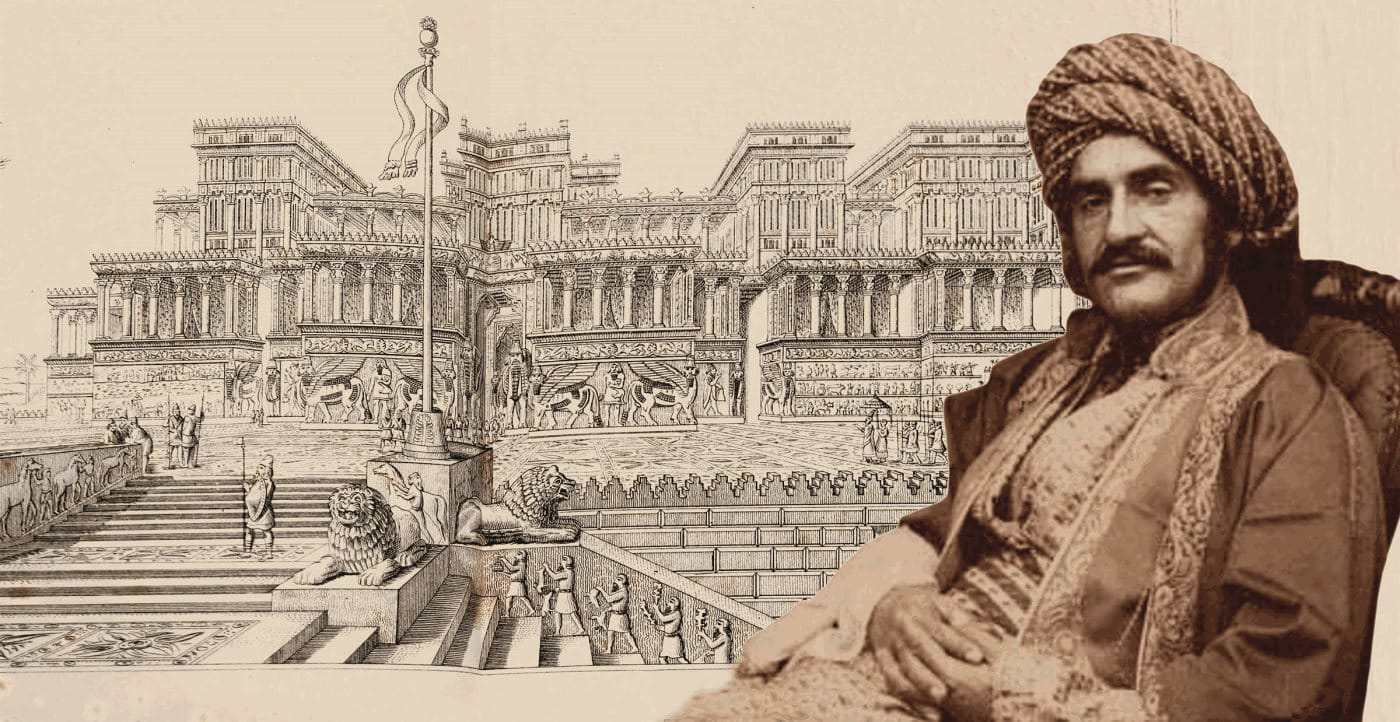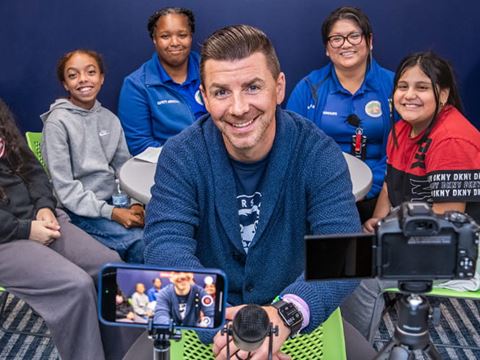
Understanding Perspectives in Storytelling a Life
Archeology
History
Museum Studies
Language Studies
Mesopotamia
Fertile Crescent
For teachers: We encourage reproduction and adaptation of these ideas, freely and without further permission from AramcoWorld, by teachers at any level.
Common Core Standards met in this lesson: RI9-10.1/RI9-10.2/RI9-10.3 (see details below).
—The Editors
Do you have comments? I'd be pleased to hear from you at [email protected].
—Julie Weiss
Iraq's First Archeologist
- Explain why a biography might include certain facts but not others.
- Translate written text into a graphic organizer to help see more clearly a sequence of events.
- Discuss how similar facts can be woven into different stories and what those stories might be like.
"Iraq's First Archeologist" tells the story of Hormuzd Rassam. It begins the telling in 1846, recounts his many activities and accomplishments and concludes with his passing in 1910. One way to grasp the story of Rassam's life is to make a visual image that will help you see what took place and in what order. To that end, make a horizontal timeline of Rassam's life as it is recounted in the article. Above the line, write where Rassam was and what he was doing. Beneath the line, write what he discovered and why it was important. One way to make sure you have enough space to include all the information is to make the timeline a class project made on butcher paper that you unroll across a wall of the classroom.
Once you've placed all the key dates and activities where they belong and included the significance of each, step back. Sometimes it is possible to identify specific periods within a person's life. For example, you may be able to think of your own life as defined by which school you attended during given periods of time or by where you lived. You probably hear people who are older say things like, "these are the years I went to college," "this is when I worked for this company," or "this is when my children were young." Look at Hormuzd Rassam's life across the timeline. What distinct periods can you identify? Find a way to show the time periods on your timeline. Label them.
Now that's you have received an overall picture of Rassam's life, let's take a deeper look at how writer Jane Waldron Grutz narrates the story of Rassam. Remember, although there are indisputable facts about Rassam's life, Grutz made a series of decisions about which ones to include and how to piece them together in order to tell the story. First, you might have been surprises to notice that she does not begin the story until Rassam is 19. Maybe you thought that a biography was obligated to tell a person's life from birth to death, but that's not necessarily the case. Discuss with a classmate why Grutz might have decided to skip the first 18 years of her subject's life. Hint: Look at your timeline to see the types of activities that the article includes. Then take note of the kinds of events and actions Grutz excludes. Based on what is there and what is missing, what would you say is the focus of this biography of Rassam.
How else might Grutz have told Rassam's life story? If Rassam had been a religious figure, she might have focused on his spiritual experiences. If he had been female, she might have included more about children. The title of the article, "Iraq's First Archeologist," lets you know that the article is a biography. But you have seen that it also includes information about archeological discoveries. Imagine a different article, one that might be called "The Origins of Assyriology." With a partner, study the Rassam timeline and write what could serve as an introduction to that other article about Assyriology. What would you include from Rassam's life? What might you not include in the new article? What questions might you have about additional information you might need to add?
As a class discuss the fact that there are many different ways to approach a story. Is one way right and the other wrong? In the case of Hormuzd Rassam and Assyriology, would one way of telling the story be more accurate than the other? While point-of-view can change and different information be included or excluded, what must remain unchanged in any story of a person's life or any historical event?
Common Core Standards met in this lesson:
RI9-10.1 Cite strong and thorough textual evidence to support analysis of what the text says explicitly as well as inferences drawn from the text.
RI9-10.2 Determine a central idea of a text and analyze its development over the course of the text, including how it emerges, and is shaped and refined by specific details; provide an objective summary of the text.
RI9-10.3 Analyze how the author unfolds an analysis or series of ideas or events, including the order in which the points are made, how they are introduced and developed, and the connections that are drawn between them.
Other lessons

Learn the Art of Collaboration via the Art of Tiles
For the Teacher's Desk
With Portuguese tiles as teaching tools, discover how teamwork builds something lasting.
Aramco World Learning Center: No Passport Required
For the Teacher's Desk
Project-based learning lies at the heart of AramcoWorld’s Learning Center. Link its resources into classroom curriculum, no matter the subject.
Taarab Music: Exploring the History and Cultural Impact in Zanzibar
Art
History
East Africa
Explore taarab’s cultural roots, sound and instruments—then compare its emotional and social impact to music in your own life.